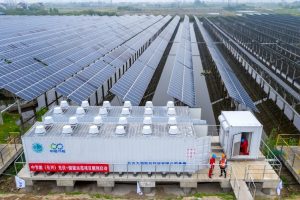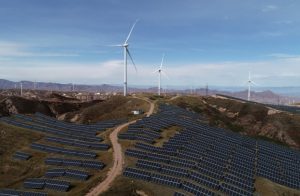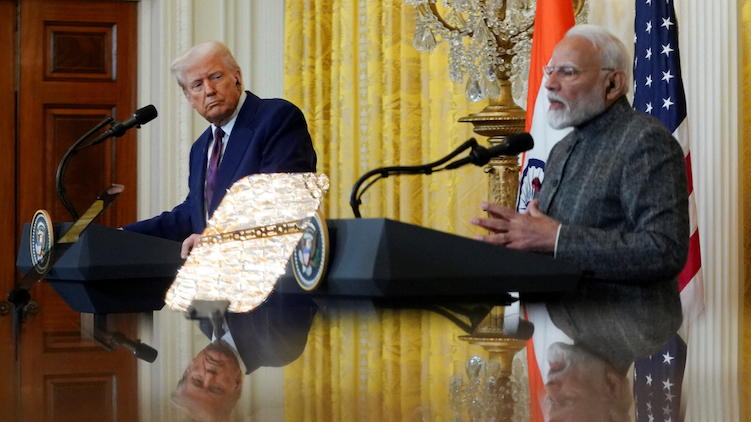Chinese exports suffered a worse-than-expected fall in October after months of effort to ‘frontload’ US orders before President Donald Trump hit them with sizeable tariffs.
Customs data released on Friday showed that, despite trying to find buyers elsewhere around the world, Chinese manufacturers have been heavily reliant on sales in America.
The world’s second-largest economy has pushed hard to diversify its export markets since Trump won the US presidential election last November, bracing for a resumption of the trade war that dominated his first term in office, and seeking closer trade ties with Southeast Asia and the European Union.
ALSO SEE: Supreme Court Defeat Seen Adding to Uncertainty on Trump Tariffs
But no other country comes close to matching China’s annual sales of more than $400 billion in goods to the US, a loss that economists estimate has cut China’s export growth by around 2 percentage points, or roughly 0.3% of GDP.
The October customs data on Friday underlined that point, as China’s exports shrank 1.1%, the worst performance since February, reversing from an 8.3% rise in September, and missing a forecast for 3.0% growth in a Reuters poll.
“It appears the rush to ship goods to the US ahead of tariff hikes subsided in October,” Zhang Zhiwei, chief economist at Baoyin Capital Management, said.
“With export momentum now waning, China may need to rely more heavily on domestic demand.”
Shipments to US down 25%
Chinese shipments to the US tumbled 25.17% year-on-year, the data showed, while those to the European Union and Southeast Asian economies – big trading partners with whom policymakers have sought to bolster ties amid tariff tensions with Washington – grew by just 0.9% and 11.0%, respectively.
Most analysts largely agree that Chinese manufacturers have pushed as many goods into the world as possible for now.
“I think the PMI was already warning us that Chinese exports cannot continue to grow forever, and it’s not only because of the US but because the global economy is slowing,” said Alicia Garcia-Herrero, chief economist for the Asia-Pacific at Natixis.
“Exports through Vietnam to the US will decelerate once the front-loading is over, and we’re there. So I think it’s going to be much tougher for China in the fourth quarter, which means it’s going to be tougher in the first half of 2026 as well,” she added.
China’s yuan edged lower against the dollar following the data’s release, registering its first weekly decline in a month.
Tentative tariff truce
Traders and investors on both sides of the Pacific breathed a sigh of relief last week after Trump and Chinese President Xi Jinping agreed to trim their tariffs and pause a raft of other measures for one year, easing concerns the two leaders might abandon their highly anticipated meeting after a renewed spike in tensions in early October.
But US-bound Chinese goods will still face an average tariff rate around 45%, above the 35% level that some economists say wipes out Chinese manufacturers’ profit margins.
Woei Chen Ho, economist at UOB Singapore, said the US-China trade truce struck by the two leaders last month would stabilise the outlook in the near-term, but forecast that “both countries will try to reduce their interdependence and we’re going to see the US share of China trade, especially exports, drop.”
China’s trade surplus with the US came in at $24.76 billion in October, rising from $22.82 billion a month prior.
In line with its push to broaden its trade ties, Beijing on Thursday flagged fresh prospects for a trade or investment deal with the European Union, the world’s third-largest economy. Last month, China posted a trade surplus of $21.9 billion with the 27-strong bloc.
Imports down amid weak domestic demand
Insufficient domestic demand remains a hurdle to driving growth, too.
That was underlined by the imports data, which expanded at their slowest pace in five months, up 1.0% compared to 7.4% growth in September and a 3.2% forecast rise.
Officials said last month that China would aim to raise the percentage of household consumption of GDP “significantly” over the next five years, after a key conclave of the ruling Communist Party’s Central Committee mapped out economic and policy goals for 2026-2030.
China’s imports of soybeans, crude oil, and iron ore rose in October from a year earlier, with record soybean purchases from South America attributed to crushers rushing to buy before potential price spikes in Brazil caused by missed China–US shipments, while energy imports were supported by competitive prices.
But copper purchases, key to the construction sector, dropped, as consumers shied away from restocking due to high prices for the metal and as a prolonged property downturn continues to crimp demand.
“With intensifying growth headwinds from a slew of demand shocks, especially on retail sales and exports, we believe Beijing’s policy focus might once again shift to ensuring short-term stability,” Nomura analysts said in a note.
“Fiscal expansion will likely be the key focus of Beijing’s policy agenda.”
- Reuters with additional editing by Jim Pollard























